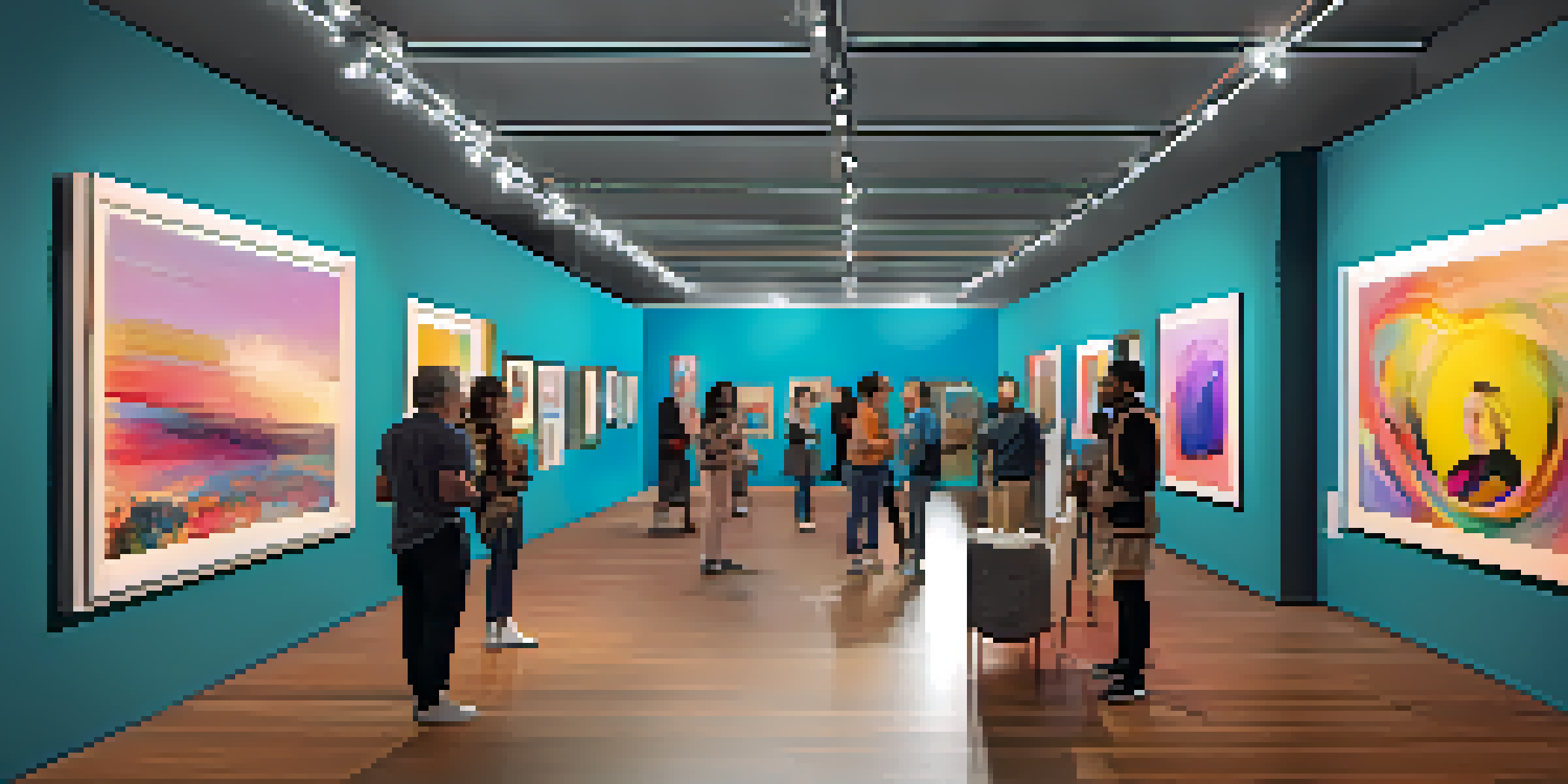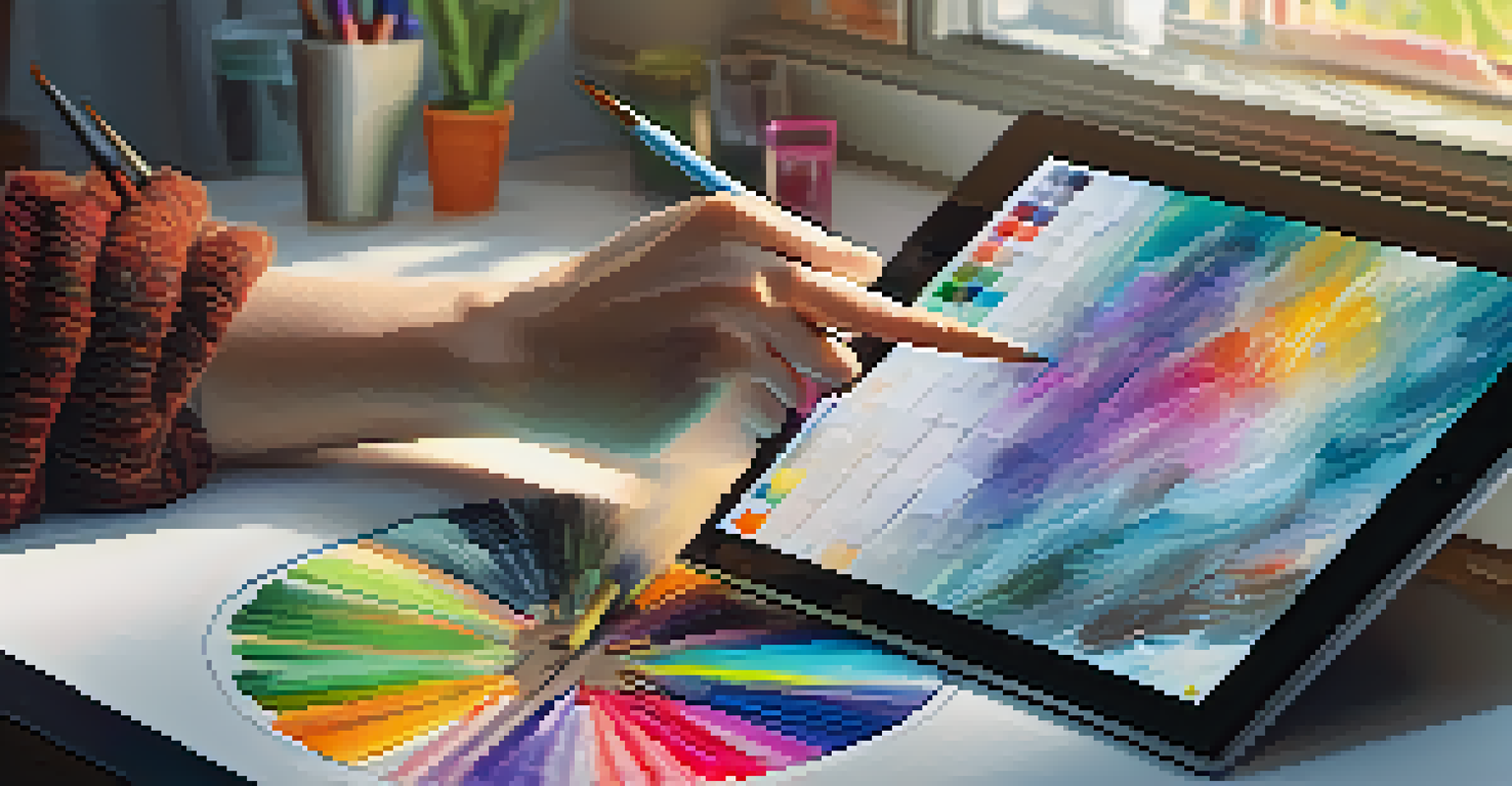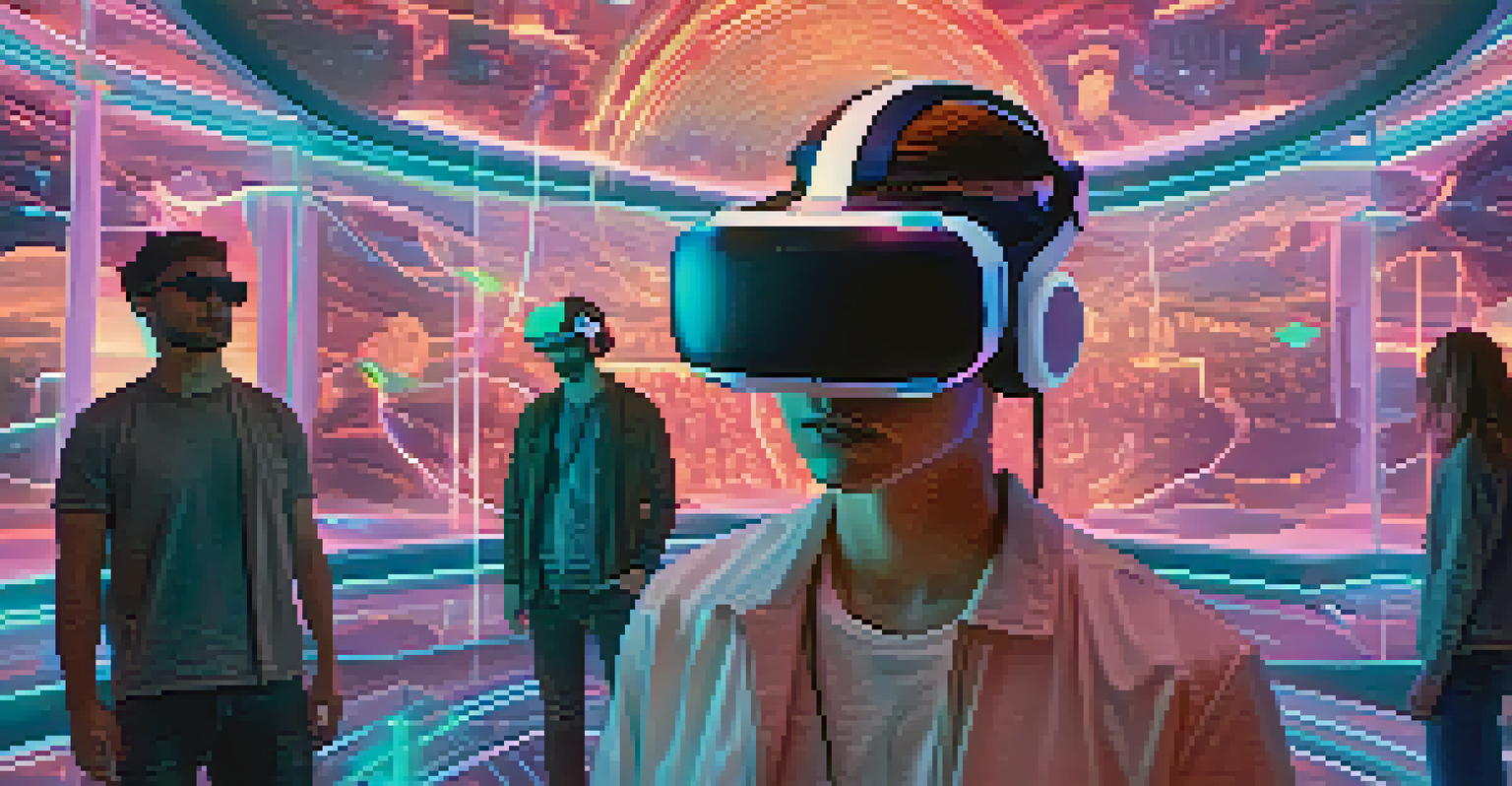The Role of NFTs in the Future of Fine Art Sales

Understanding NFTs and Their Impact on Art Sales
Non-Fungible Tokens, or NFTs, are unique digital assets that represent ownership of a specific item or piece of content, often linked to art. Unlike cryptocurrencies like Bitcoin, which are interchangeable, each NFT is distinct and cannot be replicated. This uniqueness has made NFTs particularly appealing in the art world, where provenance and authenticity are paramount.
Art is not freedom from discipline, but disciplined freedom.
The rise of NFTs is revolutionizing how artists and collectors interact with digital art. With blockchain technology ensuring secure transactions and verifiable ownership, artists now have a direct way to sell their work without the need for intermediaries like galleries. This shift not only empowers creators but also allows them to retain a larger share of their sales.
As the digital realm continues to expand, the role of NFTs in art sales is becoming increasingly significant. They enable artists to reach a global audience, creating new avenues for exposure and income. This trend signals a transformative moment in the art market, where traditional barriers are being dismantled in favor of innovative solutions.
The Benefits of NFTs for Artists and Collectors
One of the most significant benefits of NFTs for artists is the ability to earn royalties on secondary sales. Traditionally, artists see little to no profit once their work is sold, but NFTs can be programmed to ensure creators receive a percentage of future sales. This ongoing revenue stream provides a sustainable income model that can help artists thrive.

For collectors, NFTs offer a new form of ownership that extends beyond the physical realm. Owning an NFT means having exclusive rights to a digital artwork, which can be showcased in virtual galleries or even in the metaverse. This modern approach to collecting art caters to tech-savvy individuals looking to invest in unique assets.
NFTs Transform Art Ownership
Non-Fungible Tokens are revolutionizing art sales by allowing artists to sell directly to collectors, ensuring verifiable ownership and authenticity.
Moreover, the transparent nature of blockchain technology fosters greater trust between buyers and sellers. Every transaction is recorded and publicly accessible, making it easy to verify an artwork's history and authenticity. This level of transparency can enhance confidence in the art market, benefiting all parties involved.
Challenges Facing NFTs in the Fine Art Market
Despite the excitement surrounding NFTs, there are challenges that need addressing. One major concern is the environmental impact of blockchain technology, particularly with energy-intensive networks like Ethereum. Critics argue that the carbon footprint of creating and trading NFTs is significant, prompting artists and platforms to seek more sustainable alternatives.
The artist is nothing without the gift, but the gift is nothing without work.
Additionally, the NFT market can be volatile, with prices fluctuating wildly based on demand and trends. For collectors, this unpredictability can pose risks, as the value of an NFT can drop significantly after purchase. Understanding market dynamics is crucial for anyone looking to invest in NFTs as a long-term asset.
There are also questions about copyright and intellectual property rights in the NFT space. Artists must ensure they retain the rights to their work, while collectors need to understand what ownership of an NFT entails. As the market matures, clear guidelines and regulations will be essential for protecting the interests of both creators and buyers.
The Role of NFT Marketplaces in Art Sales
NFT marketplaces serve as the online platforms where artists can showcase and sell their digital artwork. These platforms, such as OpenSea and Rarible, have sprung up to cater specifically to the needs of artists and collectors. They provide the tools necessary for minting NFTs, listing them for sale, and facilitating transactions securely.
The ease of use and accessibility of these marketplaces is a game-changer for many artists. No longer do they need to navigate complex gallery systems or rely on traditional art sales methods. With a few clicks, they can reach a global audience, democratizing the art sales process in unprecedented ways.
Sustainable Income for Artists
NFTs provide artists with the opportunity to earn royalties on secondary sales, creating a sustainable income model that supports their ongoing success.
Moreover, many NFT marketplaces are beginning to incorporate features that enhance the buying experience, such as virtual exhibitions and augmented reality previews. These innovations not only make the process more engaging but also help potential buyers visualize their investments in new and exciting ways.
The Future of NFT Art Sales: Trends to Watch
Looking ahead, the future of NFT art sales is poised for significant growth and evolution. One trend to watch is the increasing integration of NFTs with augmented and virtual reality. This technology could revolutionize how art is displayed and experienced, allowing collectors to showcase their digital assets in immersive environments.
Another exciting development is the emergence of fractional ownership of NFTs. This concept enables multiple collectors to own a share of a high-value NFT, making investment in expensive artworks more accessible to a broader audience. This could significantly change the landscape of art collecting and investment.
Lastly, as the NFT space matures, we can expect to see increased collaboration between traditional art institutions and digital platforms. Galleries and museums may begin hosting NFT exhibitions, bridging the gap between conventional art and the digital realm. This collaboration could foster greater acceptance and understanding of NFTs in the mainstream art world.
How Artists Can Leverage NFTs for Success
For artists looking to get involved in the NFT space, the first step is to familiarize themselves with the technology and platforms available. Understanding how to mint an NFT and the various marketplaces can help them navigate this new landscape effectively. Educational resources, webinars, and community forums can be valuable tools for learning.
Moreover, creating a strong online presence is crucial for success in the NFT market. Artists should leverage social media and networking platforms to promote their work and connect with potential buyers. Engaging with the community and other artists can lead to collaborations and increased visibility.
Challenges in the NFT Market
Despite their potential, NFTs face challenges such as environmental concerns, market volatility, and the need for clear copyright regulations.
Lastly, artists should consider the storytelling aspect of their work. Sharing the inspiration behind their art and the process of creating an NFT can create a deeper connection with potential buyers. This personal touch can enhance the value of the artwork and foster a loyal following.
The Emotional Connection of Art in the Digital Age
Art has always been about connection, whether it's between the artist and the viewer or within a community. In the digital age, NFTs are adding a new layer to this emotional connection. Owning a piece of digital art can evoke a sense of pride and belonging, especially in an increasingly virtual world.
Many collectors find joy in supporting artists directly through NFT sales, creating a more intimate relationship with the work they own. This shift helps to transform the traditional art market, which often feels impersonal, into a more community-oriented space where artists and collectors can interact directly.

As technology continues to evolve, so too will the ways in which we experience and connect with art. NFTs represent just one avenue of exploration in this journey, reminding us that art's emotional power can thrive even in digital formats. This shift opens up exciting possibilities for future generations of artists and collectors alike.